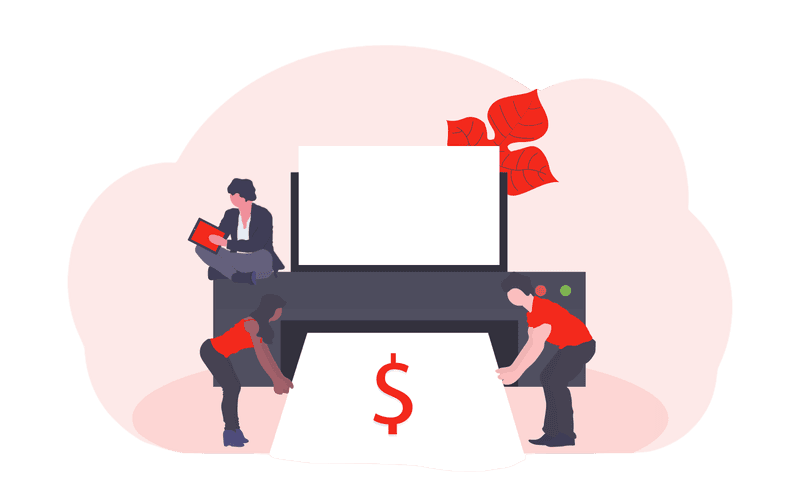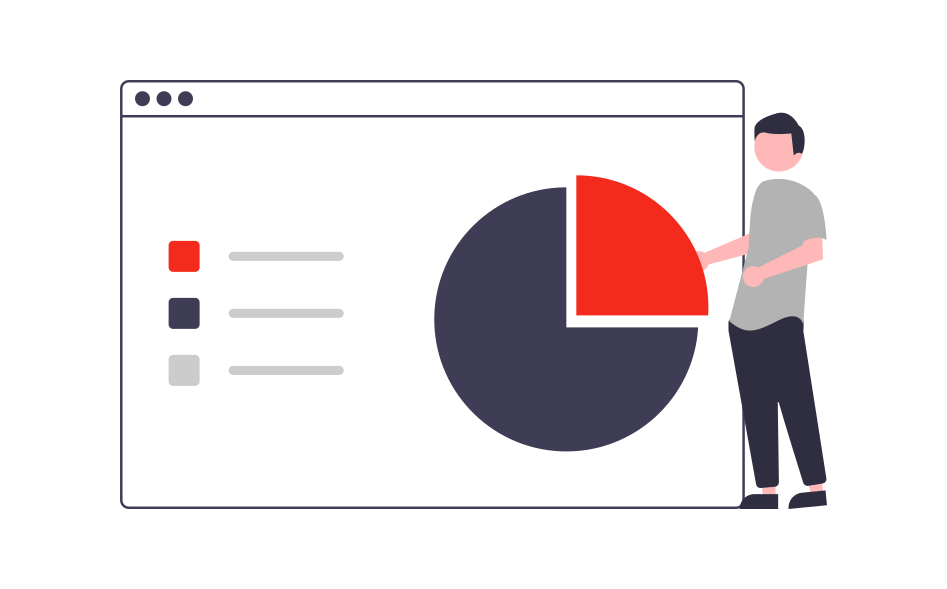In this complete leverage forex trading guide, we will break down the concept of trading the forex markets in full detail.
You will learn how it works, how to trade with leverage, what the benefits and drawbacks are, and much much more.
A multiplier in forex trading is essential to enable traders to open positions that are large enough to yield a profit. This is made possible by borrowing money from a broker and using it to trade.
When trading without leverage, most traders would be stuck making cents up to a few dollars per trade.
With margin, traders are capable of opening positions worth well over $100.000 which drastically increases profits, however, it also means that your potential losses are magnified as well.

Forex leverage explained
When it comes to forex trading, credit is a key concept. It simply refers to the ability to trade larger amounts of money than you have in your account. For example, if you have $1,000 in your account and you’re using a 50:1 ratio, you can trade up to $50,000.
You could say that leverage is a multiplier of your account balance where your capital often is referred to as collateral.
Forex trades with multipliers are very similar to a bank loan for a car or a house where you as the borrower put down the upfront payment to access the borrowed money.
Forex works the same way, to open a leveraged position, you first need to make an initial investment and use this capital as margin.
Key takeaway
- Margin = Your own capital (also referred to as the collateral money)
- Leverage = The borrowed money you receive from your broker
While leverage can be a great tool that can help traders increase their profits during a bull market, it can also be a dangerous one.
So, it’s important to use credit wisely with the use of proper leverage risk management and never risk more than you’re comfortable with losing.
How does it work in the forex market?
So, how does leverage in forex trading work, and is it the same as in other asset classes?
As mentioned above, there are two parts to a successful forex position and the margin capital.
When you open a position, your broker will provide you with some of the capital needed to place the trade. The amount of credit available varies from broker to broker but is typically from 1:2 up to 1:2000 for major currencies.
If the trade goes in your favor and the currency pair you are trading rises in value, then your profits will be magnified by the amount of credit you are using.
For example, if you use 1:50 leverage, this means that for every $1 you have in your account, you can trade up to $50 worth of currency. If the currency pair rises by 1%, then a 50:1 position will see profits of 50%.
An initial deposit of $200 with a ratio of 1:50 would mean that you could open a forex position worth $10.000.
Keep in mind though, that if the currency pair falls you will suffer losses that are multiplied by the ratio you use.

How do you trade forex with borrowed money
Forex trading with leverage is usually done with short-term strategies such as scalping and other day trading practices where most traders benefit from very small price swings through highly leveraged positions.
Before you pick a broker it is important to evaluate how large your positions will be and choose your account accordingly. For instance, choosing the best lot size for $20 can make a big difference in how you manage your trades.
The actual trading is done through the charting interface, or the trading platform, which can differ from broker to broker.
Many forex brokers offer the traditional MetaTrader 4 and MetaTrader 5 which have all the necessities a trader needs when it comes to charting functionality, order types, and of course the number of markets.
Other operators have integrated web-based trading platforms that let you trade in your browser which is also a great option if you don’t want to go through the hassle of downloading the MT4 or MT5 programs.
Most brokers offer demo trade accounts where you can practice trading without risking any of your own money.
3 examples to give you the full picture
To give you, the reader, a better perception of how it could feel to trade a live forex account I will give try to explain in different ways profits and losses occur in different trades based on different sizes and ratios.
Let’s take a look at some examples that could happen in the forex market.
Example 1
You have a $1,000 trading account and you want to use credit to trade EUR/USD.
With a 1:100 ratio, you could trade up to $100,000 worth of currency. This means that for every $1 that the EUR/USD moves, your account will move $100.
If the EUR/USD moves from 1.20 to 1.21, your account will increase by $100. If the EUR/USD moves from 1.20 to 1.19, your account will decrease by $100.
Example 2
If you have $1,000 in your margin account and you want to purchase $10,000 worth of USD/JPY, you can do so by borrowing $9,000 from your broker at a ratio of 1:10.
Assuming the trade goes in your favor and the currency you purchased increases in value by 10%, you would make a profit of $1000 which is a 100% ROI on your initial investment.
If the trade had gone against you and the currency decreased in value by 10%, your original investment would now be worth $0 and your account would be liquidated by leverage.
Now the best way to avoid a margin call or a full liquidation is with the use of a stop-loss order.
Example 3
Let’s say that you have $2,000 to invest in GBP/CAD. With a ratio of 1:100, you could control $200,000 worth of currency.
So, if GBP/CAD increases in value by 0.50%, your profit would be worth $1,000.
Now let’s say that GBP/CAD decreases in value by -0.50%. In this case, your initial investment of $2,000 would lose value and be worth $1,000.
As you can see, leverage can help you to make more money in a very short time when the currency pair goes your way, but it can also hurt you when the market goes against you.

Different ratios explained
Let’s simplify one of the more complicated terms in the forex world.
It might seem complicated but once you understand the one function they have you will never have to ask yourself this question again.
Think of the ratio as a multiplier of your account balance. Let’s say that your initial deposit is $500 and you are trading with a ratio of 1:10, then you would be able to control a position size worth $5000.
The calculation is simple: $500 x 10 = $5000
That’s the easiest way to explain how ratios work, and they work the same for any level of leverage you choose. For example, if your account balance is $1200 and you use a ratio of 1:75 you simply multiply $1200 by 75 to figure out the buying power.
$1200 x 75 = $90.000
Now, the ratio is the amount of borrowed money you will receive from your broker once you open a trade. But there is another part to a full forex position which is your capital, or the collateral money.
Let’s take the image above as an example. The red part of the circle represents 25% of the whole circle. Let’s say that this is your part of a forex position.
If you put up 25% of the total position, you are trading with a ratio of 1:4, because 25% times 4 equals 100%.
It doesn’t matter how much the full value of the trade is, as long as you know your part of the transaction and the part that the broker is providing.
Once you understand the concept of your own money (the margin) and the leverage (borrowed money) you are going to find it very easy to figure your forex credit for any trade.
Now, a common margin ratio for forex is between 1:20 and 1:200 and this has to do with your liquidation price that is moving closer to your entry price when you increase your ratio.
You can find out your liquidation price by using our liquidation price calculator.
5 benefits you should know about
The most obvious reason for using leverage is of course the chance of making more money. However, there are other good reasons for choosing an account that most beginners are not aware of that could potentially boost your results in different ways.
Below are five benefits that I think are worth mentioning:
1. You can make more money with leverage – As credit allows you to trade with more money than you have in your account, it gives you the potential to make more money. If your trade is successful, you will make a profit on the full amount of the trade, not just your account balance.
2. You can optimize your strategy – If you have a successful strategy already that is making money regularly you can use borrowed money to add boost your best setups. If you know for example a great setup in GBP/CAD but you don’t have enough money to profit from a 50 pip move, then a multiplier can be a great addition.
But keep in mind, that this would only work if you have an already tested strategy that works.
3. You can use leverage to hedge your trades – Hedging is a risk management strategy where you offset the potential loss from one trade by taking another trade in the same currency pair but in the opposite direction. By using leverage, you can take a smaller part of your margin capital and fully hedge your open position without spending that much money.
4. You can use leverage to take advantage of larger movements – If you believe the market is going to move in a certain direction in a big way, you can use debt to increase your gains. For example, if you think the EUR/USD currency pair is going to rise above a resistance line, you can buy more euros than you normally would and benefit from a good market move.
5. You can use leverage to trade with a smaller account – If you don’t have money to invest, you can still trade forex by using debt. This was the initial concept of why operators around the world started to enable underfunded traders. It’s great because the platform makes money from fees by allowing more traders to make money from speculating.
This allows you to get started in the market with a smaller account and grow it over time as your skills and knowledge improve.
All the common risks
There are a handful of risks that you should be aware of as a trader in the forex markets, especially when you are adding credit to the mix. Below are some of the most important risk factors to take into consideration before you start.
- Magnified losses – While it is a well-known factor that leverage brings increased profits to the table it is very often underrated how much you can lose when a position goes against you. Beginners often make the mistake of only looking forward without having their backs covered and this can cost them dearly. You can lose more money than invested with leverage.
- Increased fees – The next risk I wanted to list was the increase in trade commissions. If you are a stock trader or perhaps come from cryptocurrency trading and are used to having a standard 0.20% flat fee you are going to be surprised how quickly the fees can ramp up, especially if you trade an exotic forex pair with wide spreads. Large spreads with high levels can cause your trading account to bleed out pretty fast. Make sure you understand exactly how the fee schedule works and only trade when you find a broker with decent fees.
- Shady brokers – The forex business in general has had a bad reputation due to many shady actors that are trying to make a quick buck by manipulating prices, adding fees, and stopping withdrawals from clients. This is no longer a problem, thank god, but if you choose to trade on an off-shore forex broker to find higher ratios you might end up signing up with a true scammer. Most of the off-short brokers are unregulated and the truth is that most of them cannot be trusted. Instead, choose one of the brokers we recommended earlier in this guide to stay on the safe side.
- Margin call – A margin call is a warning from your broker that your losses have eaten up most of your margin capital and you are getting close to a full liquidation. At this point, you can still save what’s left in your account by closing out your open positions and taking the loss before it gets worse. Leveraged accounts regularly get margin called due to inexperience by the trader that overleverage in search for profits. My tip for trading is to start small and increase as you learn.
- Liquidation – Getting liquidated is truly a worst-case scenario for any forex trader, big or small. When you suffer a full liquidation it means that your margin capital has run out and you can no longer withstand the open losses in your account. Liquidation is an automatic termination of all open positions done by your broker to avoid falling into debt with the broker. To avoid liquidation learn how to figure your liquidation price and use a stop-loss for every trade.
Related: Is leverage trading legal in the US?
Margin call explained
If your margin requirements fall below the threshold, you’ll receive a margin call from your broker. The warning sign is usually in the form of an online message in your trading terminal but in some cases, they might give you a phone call.
Here’s a quick rundown of what you need to know about margin calls.
- A margin call happens when you don’t have enough margin capital in your account to cover the overall losses
- A team member of your broker will usually try to reach you before taking any action
- If they can’t reach you, they may close out some or all of your positions at whatever price they can get
- The best way to avoid a margin call is to always make sure you have enough money in your account to cover your margin requirements
- A stop loss will also prevent a margin call from happening
Our stop loss calculator is a tool you can use to set your perfect stop loss in any market.
If you see this warning sign on your platform or if you receive a phone call, you have three options.
- Deposit more money into your account to meet the margin requirements
- Close out some of your open positions to increase your margin
- If you only have one big position open you might need to close it out and take a big hit
If you don’t take either of these actions, your broker will likely do it for you. Every situation is different and many factors are in play when you get margin called. The decision is ultimately up to you and whatever you decide to do you should know that the worst thing you could possibly do is to ignore the margin call and hope things turn around, they usually don’t.
Frequently asked questions
1:500 leverage means that you multiply your initial investment 500 times. If your deposit $800 into your forex account and use a 1:500 ratio, you would be able to enter the market with a position worth $400.000. This is the true power of forex, but don’t get fooled, forex trading can cause large losses in a very short time.
Yes, it does. Whenever you score a profit with credit your profits are proportional to the level of your ratio. If you use a ratio of 1:50, then your profits will be 50 times larger.
This depends on your setup and strategy. But for example, if you trade $1000 with a leverage of 1:25 and your currency pair moves 0.50% in your direction you will score a profit of $125.
Conclusion
In this complete leverage forex trading guide, we have broken down all the most important topics that beginner traders should know about.
It truly feels like a jungle when you first start out in the FX market but as you learn you will realize that it is not as complicated as you might have thought.
My recommendation is that you read through the whole guide starting at the top. When you are ready to take the next step to start trading you should pick a forex broker that suits your trading style.
Focus on a low-spread broker with a great reputation for being trustworthy.

